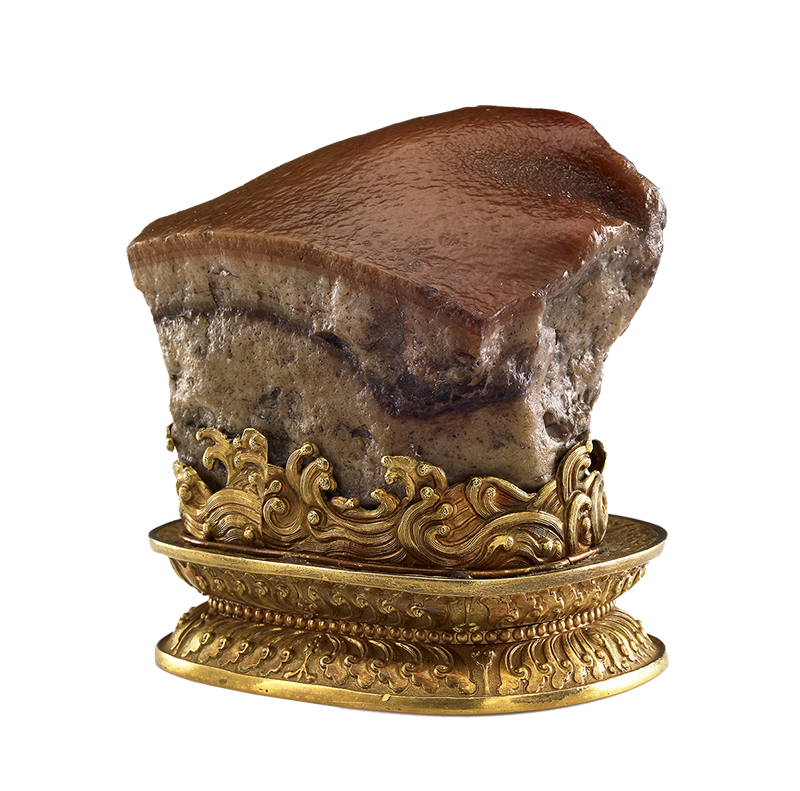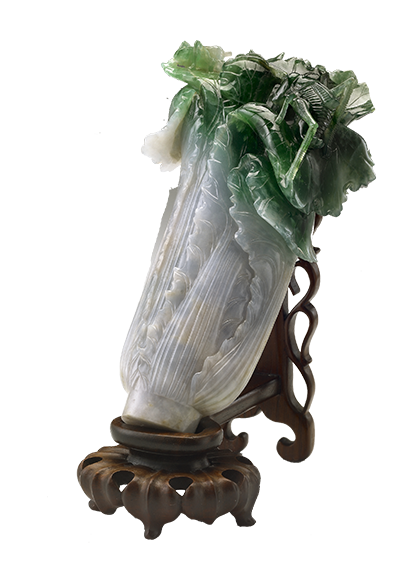Meat-shaped stone
What looks tantalizingly similar to a tender piece of mouth-watering braised pork belly is actually a hard mineral known as banded jasper. This mineral naturally appears with layers that, in this case, can suggest those of fat and meat in a piece of pork. The craftsman utilized this feature to stain the layers from top to bottom with darker to lighter shades of brown, respectively, giving the effect of fatty meat stewed in soy sauce. Even more remarkable is that he created many dimples on the upper surface to mimic the hair follicles of pork skin, making this tough mineral look even more like a tender piece of stewed Dongpo pork just scooped from the pot, the tender surface having a gelatinous quality.
The visual features here perfectly convey the color of braised pork and can even elicit its aroma and taste in the viewer's mind, not only preserving the essence of Chinese culinary tradition but also recalling fond memories of this dish!
Jadeite cabbage
This carving of a bokchoy cabbage in jadeite is the most popular piece in the collection of the National Palace Museum. The craftsman followed the natural colors of the jadeite to turn the green part into the leafy area and the white one into the stems. Despite the cracks and impurities in the white part, they were skillfully adapted by the craftsman and turned into a freshly cut stalk. Also at the top of the leaves are a katydid and locust, which instantaneously turn this vegetable into a lively rustic scene.
This piece originally was part of a beautiful potted decoration at the Qing court, in which the jadeite was placed upright in an enameled planter and at the bottom accompanied by a wood carving of spirit fungus. The precious jadeite and spirit fungus as a symbol of longevity and auspiciousness, combined with the colorful cloisonné enamelware, make the jadeite cabbage appear eternally fresh!

